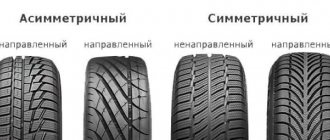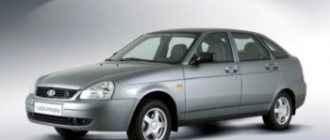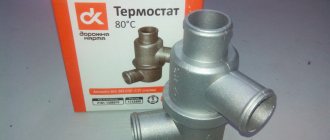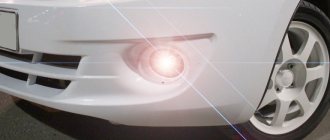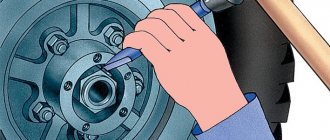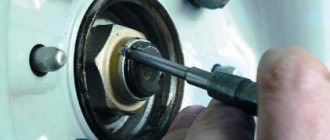What car are you the owner of? — Front-wheel drive, rear-wheel drive or all-wheel drive. Do you understand the mechanisms of a car, do you understand how its power and maneuverability on the road are justified, especially during descents and ascents? Often, the operation of cars takes place on a whim, only a part of the owners with their vehicle are on a first-name basis. An experienced and attentive driver clearly understands which part needs to be replaced as planned, whether it is necessary to rearrange the wheels, and what diagram is suitable for this. Not everyone, for example, can afford to allocate up to 20-30,000 rubles from the family budget twice a year to purchase a set of winter and summer tires. In order to save money, car owners are looking for acceptable solutions to the situation. And there may be several of them.
- “Once - yes much.” Some motorists think so and decide that it is better to buy expensive tires from a well-known brand, then you can count on quality, service, prestige and wear resistance of the product. Definitely the right decision. Firstly, premium tires are manufactured using innovative technologies, all high-level indicators are thought through, a quality stamp is given, and service life is extended. Secondly, expensive tires are a big responsibility. Of course, you can hope for their quality, and whether you can predict the road situation, whether you are able to find the ideal roadway without potholes or foreign sharp objects. There are no 100% safe roads, and any tire, be it economy class or premium, still does not last forever and is not insured against force majeure.
- “The sum does not change by changing the places of the terms.” A familiar rule from childhood. Among car owners, it is also used, only it is designated with a technical slant and sounds like this: rearranging the wheels on a car, the standard scheme is used.
- “A shirt worn to holes – still warm.” It’s practically a rag, but it’s a shame to throw it away. It may be a pity to part with your favorite clothes, but it is necessary if they no longer warm or decorate. But, of course, you can’t drive on bald tires! Unfortunately, in our society there are many reckless drivers who do not pay attention to the condition of the tires, they are not interested in rearranging the tires according to the scheme, they simply want to get to the goal in their car and are still happy that the car starts up every morning and does not refuse to carry passengers. And the fact that the braking distance has already exceeded all maximum indicators, that the car can sometimes drive, go into an uncontrolled skid - it doesn’t matter. Automobile
There may be several ways out of the situation, but let’s pay attention to the simplest and most popular one - rearranging the wheels; the process diagram has never been complicated, and even more so, several variations are attributed to it. Choose practically without restrictions!
When is a tire rotation recommended?
Service station employees recommend paying attention to the condition of the wheels, and if impressive numbers already appear on the dashboard indicating the mileage, and it is somewhere around 5,000-10,000 kilometers, then the rearrangement of the wheels is shown, the diagram is selected as desired. You should be extremely careful if you bought a used car second-hand, because then dashing craftsmen could twist the mileage figures, hiding the true wear and tear of the mechanical “stuff” of the car that was previously put up for sale. Then you should be guided by the condition of the tread pattern. We noticed wear on the front or rear wheels, assessed them as a percentage, and decided to rotate the tires according to the scheme. The following reasons for rearranging wheels are determined:
- Uneven tire wear.
- The need to strengthen one or another pair of wheels for front-wheel drive and rear-wheel drive vehicles, respectively.
- The desire to extend the life of tires, improve their condition by temporarily changing the load level.
- Unforeseen traffic situation, emergency repair work in the field.
Thus, there are no strict recommendations on when it is worth rotating the wheels; their condition is simply assessed, time is found for the replacement procedure, and money is allocated to pay for the work, if you do not do everything on your own.
How to swap wheels
Before changing wheels, it is important to choose a scheme for performing the operation. It is recommended to evaluate all the advantages and positive aspects of the process and predict possible shortcomings in advance.
It is important to understand that the work performed by the tires on the front wheels is significantly different from that assigned to the tires on the rear wheels. First of all, this is due to the level of load. A car with sporting parameters and characteristics usually wears out its tires more intensively.
If, as a result of periodic inspection, it is determined that the tires of all 4 wheels wear evenly, it is recommended to purchase a whole set and change the tires according to the selected wheel replacement scheme.
But before you start exploring different options, a little advice. Before removing the summer or winter set and performing a seasonal wheel rotation, it is recommended to first mark the tires (with chalk or water-based paint). This will help you figure out later which side and on which axis the tire was previously located.
Tire manufacturers recommend using the following symbols:
- PP (right anterior);
- PL (front left);
- ZP (rear right);
- LR (rear left).
What you need to rotate your tires
There are tools in the trunk of any car, many of which are useful for repair work. The idea is to rearrange the wheels on a car, the diagram is supposed to be available, then the following available tools will be needed:
- Jack. A model of a powerful floor hydraulic jack is suitable, with the help of which it will be possible to lift the car and fix it, perhaps for several hours, while the wheels rotate from one axle to another.
Jack - Stand. To enhance the power of the jack and securely fix the machine in weight, it is recommended to use a stand to the jack. It can be factory equipped or can be replaced with any other durable structure, for example, a cinder block or a log block.
Jack stand - Rearrangement scheme. Determine for yourself the best option so that rearranging tires according to the scheme is crowned with success and proves in practice its profitability and correctness.
When undertaking such a painstaking procedure on your own, try to enlist the support of friends or family. There is no doubt that you will need support and help. When repairing a car, there is always something to support, serve, smoke, take out, move, substitute, and so on. The list of actions can be endless!
Types of tires
All tires are divided into several types and types.
During manufacture, tires are marked with a marking indicating its main parameters and characteristics. We will not delve into the markings, but we will look at the main differences. Tires are divided into two large groups according to the method of laying the cord inside the tire during its manufacture. These are radial tires and bias-ply tires. Tires of these two types can be winter, summer or all-season. Each of these three tires can have a regular or directional tread pattern. A tire with a regular pattern can be installed on either side of the car; a tire with a directional pattern can be installed strictly in the direction of rotation. Regular and directional tread patterns can be symmetrical or asymmetrical. A tire with such a pattern is installed according to the rule for tires with a regular or directional pattern.
It is possible to buy 4 identical tires and assemble them with rims in accordance with the right and left sides of the car. You will get two left wheels and two right ones. It is very rare to come across directional tires with an asymmetrical pattern and indicating the inner and outer sides. You need to buy two of these tires on each side. Two right and two left, but it’s better to avoid such tires altogether. They are not easy to use.
Preparatory stage
Of course, you don’t have to worry about how to properly swap wheels, but simply entrust this work to specialists in a car service center. But you should remember that:
Meanwhile, you can do everything yourself. In order to rotate the wheels technically competently, to perform all operations independently, without resorting to the services of a car service, it is necessary to carry out certain preparatory measures:
If you have a little practical experience, changing wheels from a set of tires will take 1.5-2 hours, no more.
Wheel rotation schemes for different drives and tread patterns
Are you used to doing everything yourself? Then you can rotate the tires. If you can safely lift your car and remove the wheels, you can rotate the tires in your garage or driveway. In addition to the rotation pattern, you need to consider whether your tires are directional or non-directional, symmetrical or asymmetrical, and whether the tire mounting pattern is staggered or square. If you are not sure about at least one of these points, it is better to entrust the work to a professional. Also keep in mind that getting your tires into the hands of a competent professional from time to time is a smart move. Tire technicians monitor potential tire problems and identify misalignment and other problems that may affect tire condition/wear and vehicle performance.
Four wheel rotation diagram
For non-directional tires of the same size, you can use a diagonal rotation pattern, or move the front tires to the rear diagonal corner and the rear tires forward on the same side.
- “Rewards Cross” (scheme A) the scheme is used for rear-wheel drive and all-wheel drive cars, the front wheels are placed back diagonally, and the rear wheels are placed forward;
- "X-Pattern" (pattern B) is a universal pattern and can be applied to almost all cars, all wheels are swapped diagonally;
- “Forward Cross” (scheme C) scheme is used for front-wheel drive and all-wheel drive vehicles, a mirror image of scheme A.
Various tire rotation schemes for rear-wheel drive and all-wheel drive vehicles Also, due to the availability of modern tires, there is a need for 2 more rotation schemes:
- “Front-to-Rear” (diagram D) this scheme can be used for cars with directional tires of the same size;
- “Side-to-Side” (scheme E) this scheme can be used for cars with non-directional tires whose size is different on the front and rear axle.
Wheel rotation diagram for cars with directional and non-directional tires
Rearrangement taking into account the spare wheel
Most modern cars are equipped with “replacement tires” - this is not a full-size spare wheel, designed to temporarily replace a full-fledged wheel in order to at least somehow get to the nearest tire shop. If you have a full-size spare tire, it must also be included in the rotation scheme.
- “Forward Cross” (scheme F) this scheme can be used for front-wheel drive cars with a full-size spare wheel;
- “Rearward Cross” (scheme G) scheme for rear-wheel drive and all-wheel drive vehicles.
Tire rotation diagram for rear-wheel drive and all-wheel drive vehicles, including a spare wheel
Six wheel rotation diagram
Vehicles with dual rear wheels and non-directional tires may use one of the following rotation patterns:
- “Six Tire Rotation” (pattern H) pattern can be used for vehicles with non-directional tires of the same type and size;
- "Six Tire Rotation" (Pattern I) If a vehicle is equipped with a different type and/or size tire on the front and rear axles, it must use this configuration only.
Rearrangement diagram for six wheels with non-directional tires
Rotation of studded or winter wheels
Winter and studded tires also need to be rotated so that they last a long time and behave adequately on the road.
For winter wheels, the rotation needs to be done more often, approximately once every 6,000 km or once a season, whichever comes first. Important: the direction of rotation for studded tires must never change when rotating!
Truck wheel rotation
On trucks, tire rotations should be performed every 40-50 thousand kilometers or when significant uneven tread wear is detected.
The following factors should be considered when planning reshuffles:
- what position is this particular tire model intended for;
- load on each individual vehicle axle;
- tread depth measurements for each tire.
In a standard three-axle trailer, the third axle is the most loaded, but the second one operates in the most gentle conditions. At certain intervals, you should measure the remaining tread depth and swap the least and most worn tires of the same functional purpose. Twin wheels should also be swapped periodically, especially if the difference in their residual depth is more than 3 mm.
When rotating non-directional tires, it is advisable to reverse the direction of their rotation.
Some manufacturers produce universal ones that can be installed on any axis. Such tires can first be placed on the steering position, and after some mileage they can be moved to the wheels of free-rolling axles.
Rotating the wheels will help you save on changing tires, because with even wear, the service life of one set increases significantly. In addition, the same tread height contributes to the stability of the vehicle's behavior while driving.
Rotating your tires is critical when it comes to extending the life of the tires you buy. As you drive under different driving conditions, your tires will wear unevenly. Depending on your driving style, it's wise to rotate your tires every 6,000 miles (9,700 km), roughly along with every other oil change. Read on to learn how to add this inexpensive and easy money-saving technique to your mechanic's arsenal.
Reviews
Motorists' opinions on the procedure.
I rotate tires twice a season. I started after I noticed that the outer side of the tread on the rear axle was eating a little. Now wear is more even and the rubber lasts longer.
I rotate the wheels on the truck every month. If you don’t do this, the rear axle wears out the tires much faster and you have to constantly buy two more tires before the replacement date.
Specialization : Graduated from the State Automobile University, worked for 20 years at GAZ-56, now I drive a Zhiguli.
Source
Which tires are better
Based on the cord design, radial tires are preferable. Such tires are more reliable, they can withstand heavy loads when driving, and are more stable when deformed. Radial tires take longer to wear than bias-ply tires. Therefore, bias-ply tires are practically not produced at present. Almost all car owners have two sets of tires. For operating a car in winter, these are winter tires, for the summer, summer tires.
All-season tires can be used in both summer and winter. Winter tires can be studded. Such tires are allowed only in a few countries where snow often and heavily falls in winter and ice forms on the road surface. Russia is also on this list. All-season, summer and winter tires have their own design characteristics that improve vehicle handling.
Front-wheel drive or rear-wheel drive vehicles can be equipped with tires with different patterns. Such tires are installed in pairs on one axle, for example, in front of the tire with one pattern, in the rear - with another. It is prohibited to install bias tires on one axle and radial tires on the other. The dimensions must be the same. All-wheel drive vehicles must have the same tires.
Tires with different treads and different sizes are strictly prohibited. This is due to the design of the transmission. If you drive a car with different tires, the car's transmission will quickly fail. In addition, driving on different tires becomes dangerous; a car will behave unpredictably on a slippery road.
Is it worth changing tires?
The opinions of motorists on the issue of changing wheels on a car differ in some places. The first group claims that the procedure is useless and harms the tires. The second category constantly uses the procedure in the belief that this allows for maximum uniform tire wear. Both statements are true in their own way, but in individual cases.
Tires on passenger cars need to be changed constantly. The requirement is due to the uneven load on different wheels and, as a result, different wear. The requirement is especially relevant for trucks. Here, when changing the shoes of the car and trailer, it is necessary to change the tires. The load of a tractor and a truck is very different.
The procedure is limited to vehicles equipped with a pressure control system. The control unit determines what side it is on, and if there is a puncture, it shows the driver the location of the puncture. If you mix up the disks, errors in the on-board system may occur.
Tire transfer is done according to a certain pattern. If you install your wheels incorrectly, the desired effect will not be achieved.

